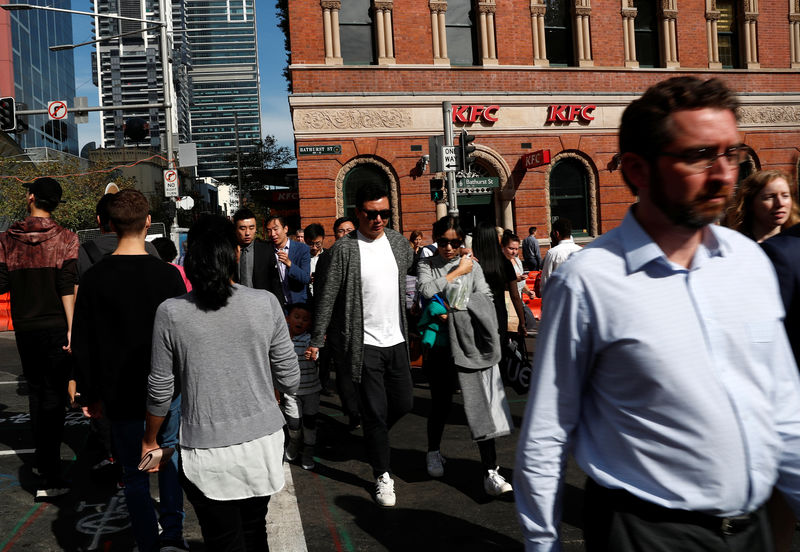(Bloomberg) -- Australia’s jobless rate tumbled in February as rising sentiment from a vaccine rollout combined with fiscal and monetary stimulus accelerated the economy’s recovery and returned employment to pre-pandemic levels.
Unemployment dropped to 5.8% from a revised 6.3% in January, data from the statistics bureau showed Thursday in Sydney. Employment jumped by 88,700 in February, compared with an expected 30,000 gain. The participation rate was unchanged at 66.1%, in line with expectations.
“The strong employment growth this month saw employment rise above 13 million people, and was 4,000 people higher than March 2020,” said Bjorn Jarvis, head of labor statistics at the ABS.
The Australian dollar advanced following the data’s release and was trading at 78.23 U.S. cents at 11:44 a.m. in Sydney.
Australia is experiencing a V-shaped recovery as the containment of Covid-19 boosts confidence and encourages cashed-up households to spend. That’s prompted firms to accelerate hiring and people to resume job-hunting.
The Reserve Bank of Australia said last month it was extending its quantitative easing program by a further A$100 billion ($78 billion) and reiterated that it doesn’t expect to increase interest rates until 2024. It’s trying to keep a lid on a currency, which left unchecked could appreciate further and hurt exports and employment.
Among other details in today’s jobs report:
- Monthly hours worked increased by 6.1%
- Under-employment rose by 0.4 percentage point to 8.5%, while under-utilization fell by 0.1 percentage point to 14.4%
- Full-time jobs rose 89,100 and part-time roles fell by 500 roles
- Unemployment declined in all states and territories
The central bank’s most recent forecasts show the jobless rate falling to around 6% by the end of this year and 5.5% at the end of 2022. Under an optimistic scenario for unemployment, the rate would drop to 4.75% by the end of next year.
The labor market’s strength might cool in the period ahead as the government’s vast wage-subsidy program JobKeeper, designed to keep workers attached to their employers, expires at the end of this month. The government is providing ongoing support to industries like tourism and airlines that are still struggling from closed borders.
The RBA late last year cut interest rates and its three-year yield target to 0.10% and initiated a quantitative easing program to lower borrowing costs across the economy. That came on the heels of the government announcing tax cuts, incentives for firms to invest and hire and infrastructure projects to boost activity.
(Updates with additional details from report in seventh paragraph.)
©2021 Bloomberg L.P.
